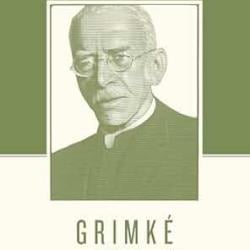This post is part of a series walking through the third volume of Abraham Kuyper’s Common Grace
“As we stated at the end of the previous chapter, the relationship between church and state is changed by nothing more strongly than the splitting of one visible church into several churches with distinct, and even partly contradictory, confessions.” (264)
Kuyper thinks that the development of denominations in a single nation is the fundamental shift in church/state relations. To which as a Baptist I reply: meh. Still, there’s an interesting point here. Kuyper argues that the existence of multiple competing churches in one state is an new-ish circumstances, as even the split between Roman Catholicism and Eastern Orthodoxy didn’t result in different churches right “next to one another in the same village” (265) This was true early in the Reformation as well [so long as we ignore the sanctuary cities with multiple international churches, but Kuyper still has a point here]. This is still the Roman Catholic position, although tolerance in plurality nations is common. The Reformers likewise took this view. Churches are true or false in this perspective, without any shades of gray.
The various Protestant splits undermined this view, especially as they were forced to unite in defense against Roman Catholicism. At times even some Roman Catholics were seen as believers. This put some tension between the Confession and the practical needs of “daily life.” Now we retain the idea of unity while practicing multiformity. The push for unity recently has focused instead of parachurch organizations.
We also know that these “attempts are ineffectual”…” even when there is no essential difference in confession.” This seems to be a necessary stage of development, and even without sin might have been the natural course of theological growth (albeit without a spoiler).
But doesn’t the New Testament suggest only one church? First, many stalks regularly come from a single plant–there’s no conceptual barrier there. Second, Paul’s letters are to single churches, where the act of a church split was over heresy–so that’s not really a negative point when there is no heresy involved. Third, the New Testament only comes about 50 years after Christ’s ascension–unity across churches (as opposed to unity within churches) is never an issue. There’s no “college of apostles” enforcing unity.
So the church may change with the circumstances. Were the church just “a clerical institution of which the believers were merely appendages,” this would not be so and a uniform model would work. Objective truth remains, but subjective application shifts over time.
Even within a nation, we see evolution and change, part of which seems to involve fragmenting the church. This is even a good thing, giving more opportunity to reflect God’s glory. Unfortunately, acrimony has defined our multiformity “and that is the greatest sin.” (272)
Dr. Coyle Neal is co-host of the City of Man Podcast an Amazon Associate (which is linked in this blog), and an Associate Professor of Political Science at Southwest Baptist University in Bolivar, MO













